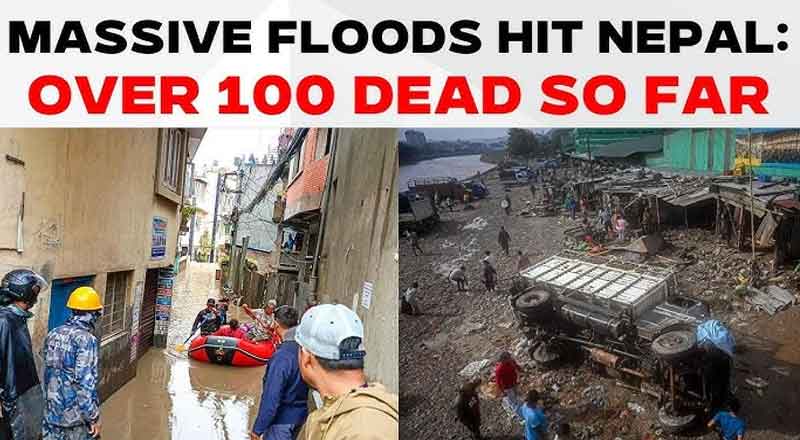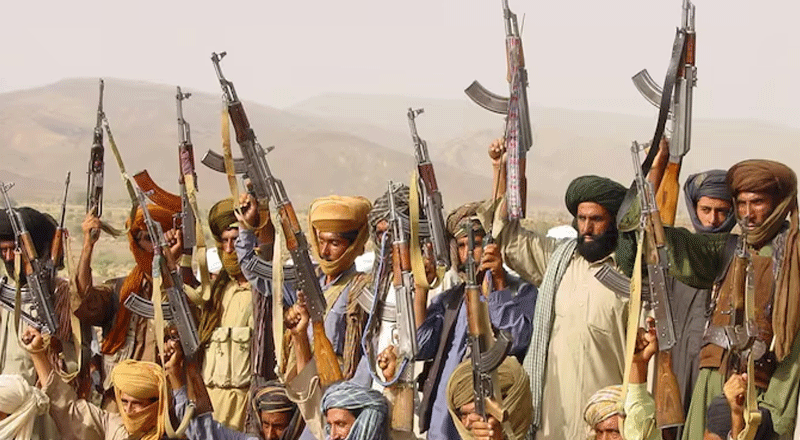Natural Disaster Strikes Nepal
Nepal is reeling from the aftermath of devastating floods and landslides triggered by incessant rainfall, leaving nearly 200 people dead and dozens missing. Heavy rains that began last Friday have caused widespread destruction across the Himalayan nation, with entire communities displaced, roads washed away, and thousands stranded. As search and rescue operations continue, the nation is grappling with the sheer scale of this natural disaster.
Rising Death Toll and Search for Missing Persons
As of Monday, the death toll from the floods and landslides has reached 192, according to Nepal Police. At least 30 people remain missing, while another 94 have been injured in the disaster. Authorities fear the death toll could rise as search and rescue operations intensify. Security forces across the country are working tirelessly to locate those still missing and provide relief to affected areas.
Nepal’s Home Ministry has prioritized rescue efforts, with over 4,500 disaster-affected individuals rescued so far. However, the scale of the destruction is overwhelming, and many areas remain inaccessible due to damaged infrastructure.
Widespread Destruction and Displacement
The floods and landslides have caused extensive damage to roads, bridges, and homes across the country. Thousands of travelers have been left stranded as major highways, including those leading to the capital, Kathmandu, are blocked. The Kathmandu Post reported that many roads have been completely washed away, cutting off access to vital areas and hampering relief efforts. The government is racing to clear obstructed highways and restore transportation, but progress has been slow due to the extent of the damage.
In addition to physical destruction, thousands of families have been displaced, with homes either submerged or destroyed by landslides. The Bagmati River, which flows through Kathmandu, is dangerously swollen, and authorities have issued warnings as water levels continue to rise. Emergency relief efforts, including the provision of food, shelter, and medical care, are underway, but the situation remains dire.
Climate Change and Unplanned Development Intensify Impact
While floods and landslides are not uncommon in Nepal during the monsoon season, experts warn that the impact of such disasters is worsening due to climate change and unplanned development. According to scientists, a low-pressure system in the Bay of Bengal, combined with the unusual positioning of the monsoon trough, led to the exceptionally heavy rainfall. However, human factors have also contributed to the severity of the disaster.
Unregulated construction on floodplains, deforestation, and inadequate drainage systems have left large areas vulnerable to flooding. The lack of proper water retention infrastructure means that excess rainfall quickly overwhelms rivers and water bodies, leading to devastating floods.
Efforts to Rebuild and Recover
Nepal’s government has pledged to prioritize relief and recovery efforts, but the road ahead is long and challenging. Clearing blocked roads, restoring damaged infrastructure, and providing shelter to displaced families will require significant resources and time. As rescue operations continue, authorities are focused on mitigating the immediate impact of the disaster while also planning for long-term recovery.
The floods and landslides have brought life to a standstill in many parts of the country, but the resilience of the Nepali people and the coordinated efforts of security forces and relief agencies offer hope in this difficult time.
(With inputs from agencies)





